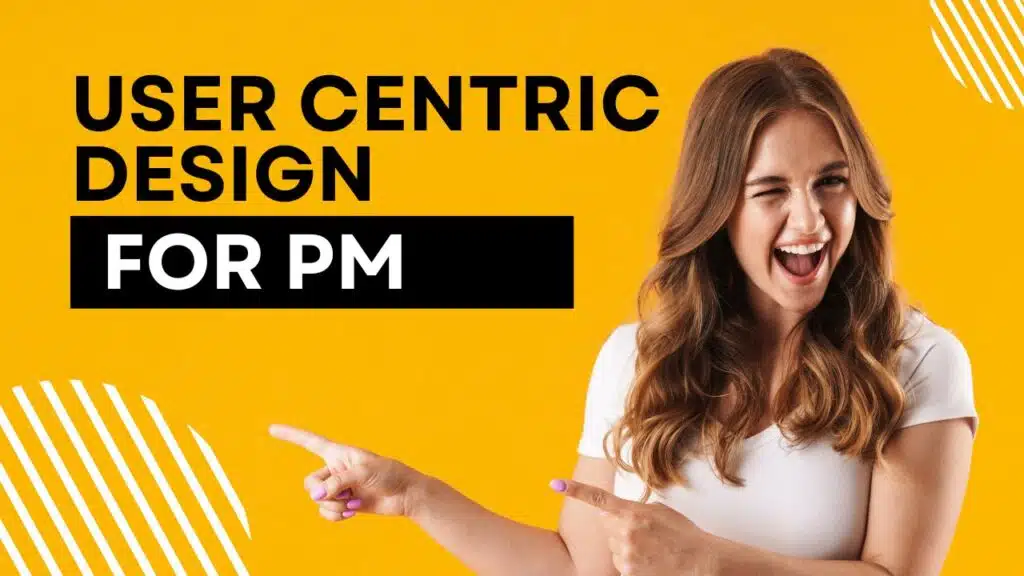Introduction
In the ever-evolving landscape of product management, success hinges on the ability to create products that not only meet but exceed user expectations. At the heart of this endeavor lies user-centric design—an approach that prioritizes the needs, preferences, and experiences of end-users throughout the product development lifecycle. In this blog, we will explore why user-centric design is a crucial element of product management and how it contributes to the overall success of a product.

Understanding User-Centric Design
User-centric design, often referred to as human-centered design, is an approach that places the end-user at the forefront of the product development process. It involves empathizing with users, defining their needs, ideating solutions, prototyping, and continuously testing and iterating based on user feedback. This iterative approach ensures that the final product is not only functional but also resonates with and delights its intended audience.
Clear Vision, Clear Communication
User-centric design, often referred to as human-centered design, is an approach that places the end-user at the forefront of the product development process. It involves empathizing with users, defining their needs, ideating solutions, prototyping, and continuously testing and iterating based on user feedback. This iterative approach ensures that the final product is not only functional but also resonates with and delights its intended audience.
The Importance of User Research
User-centric design starts with thorough user research. Understanding the target audience, their behaviors, pain points, and preferences is foundational to creating a product that genuinely addresses their needs. User research methods may include surveys, interviews, usability testing, and analysis of user behavior data.
Creating Personas for Targeted Design
Personas are fictional characters representing different user segments. Developing detailed personas helps product managers and designers empathize with users, tailoring the product to specific needs, behaviors, and expectations. This approach ensures that the design is not generic but resonates with the diverse needs of the user base.
Iterative Prototyping and Testing
User-centric design thrives on iteration. Prototyping allows teams to quickly visualize and test design concepts. Through continuous testing and feedback loops, teams can identify and address usability issues early in the development process, saving time and resources in the long run.
User Experience (UX) and User Interface (UI) Design
User-centric design encompasses both UX and UI design. UX focuses on the overall experience users have with the product, including ease of use, navigation, and satisfaction. UI design deals with the visual and interactive elements of the product, ensuring that it is aesthetically pleasing and user-friendly. A seamless collaboration between UX and UI designers is essential for delivering a holistic user experience.
The Business Impact of User-Centric Design
Prioritizing user-centric design isn’t just about creating products that users love; it’s also a strategic business decision. By meeting user needs and exceeding their expectations, organizations can foster customer loyalty, increase user retention, and gain a competitive edge in the market. Positive user experiences often lead to positive reviews, word-of-mouth recommendations, and enhanced brand reputation.
Vriddhi: Fostering User-Centric Design in Product Management
Implementing user-centric design principles is made more effective with the right tools. Vriddhi (www.vriddhi.app) is a powerful platform that facilitates collaboration and communication among product teams. It provides features for prototyping, user testing, and real-time feedback, supporting a user-centric approach to product development.
Conclusion
User-centric design is not a mere trend but a fundamental aspect of successful product management. By prioritizing the needs and experiences of users, product managers can create products that resonate with their audience, foster loyalty, and drive business success. In a landscape where user expectations continually evolve, embracing user-centric design is not just a choice but a strategic imperative for organizations aiming to thrive in the competitive market.
Read Our Latest Blogs:
Success Stories: How Completing a Tally Course Transformed My Accounting Career
Why You Should Enroll in a Tally Course: Unlocking the Power of Accounting Software
Choosing the Right Digital Marketing Course: A Step-by-Step Guide for Success
E-commerce and Digital Marketing: A Winning Combination
Email Marketing Mastery: Building and Nurturing Your Audience
